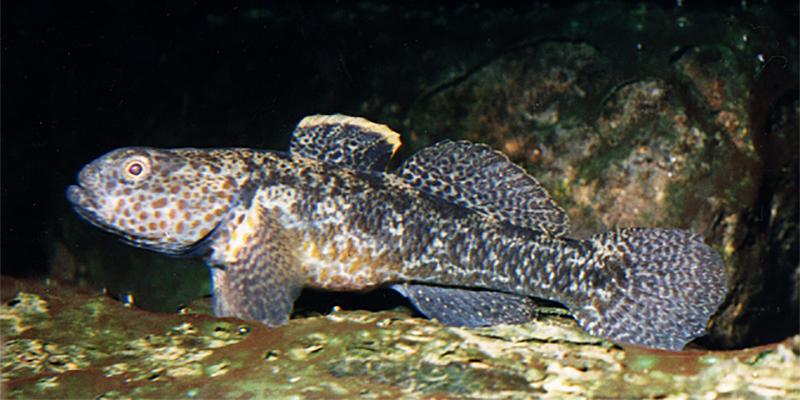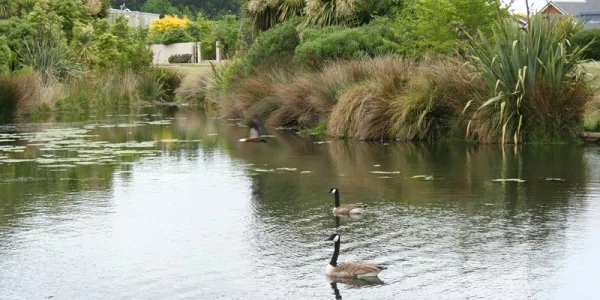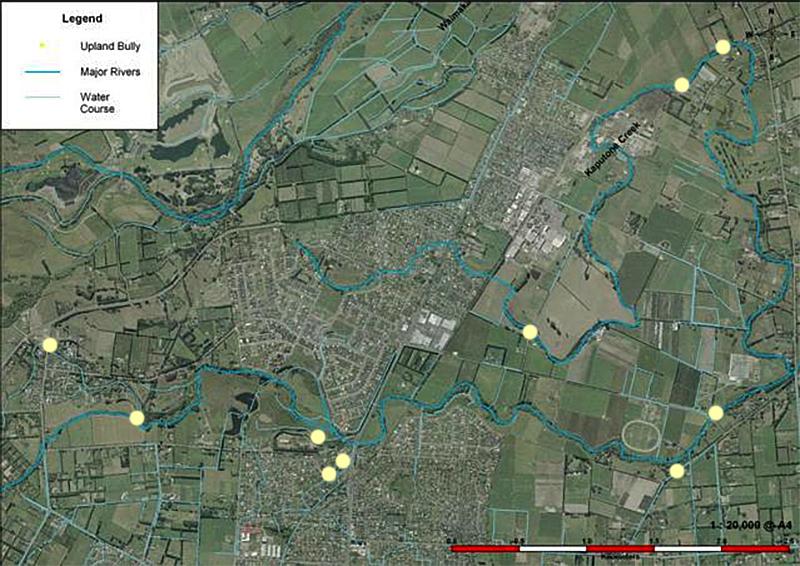Upland Bully
Common Name Upland Bully
Scientific Name Gobiomorphus breviceps
International Distribution None.
National Distribution
Indigenous (native) fish, and also endemic, thus found only in New Zealand, and then mostly in the South Island.
Distribution in the Styx River:
Upland bullies are common and widespread in the Styx River catchment, as they are in many rivers in the South Island, and the southern regions of the North Island. They tend to occupy the middle and upper reaches of rivers (McDowall 1990). In the Styx catchment, upland bullies occur in the Styx River upstream of Marshland Road, and are also identified in Kaputone Creek and Smacks Creek.
Regents Park open waterway was constructed during the early 1990's by partially diverting a drain running alongside the Main North Railway line.
Downstream from a created pond designed to act as a sediment trap, the diverted waterway runs through an attractive tree-shaded gully of overhanging ferms. In this stretch of waterway, some of the largest upland bullies have been discovered.
Found only in New Zealand, upland bullies are an endemic non-migrating species that usually grow to about 80mm in length.
The surprise came when one specimen captured in this fern-shaded area measured a whopping 112mm.
Others nearby were found to be almost as large.
Upland bullies this size are very rare, and this fish is still the largest upland bully recorded on the New Zealand Freshwater Fish Database.
Why are the upland bullies found here so big? It is likely the answer lies in a combination of reasons including the provision of a silt-free, stony habitat, a shortage of predators, and a lack of competition for food and space. These factors add up to a relatively isolated haven for these colourful native fish.
Biology
The upland bully is the one of the few bullies which spawn and are reared in their resident habitat, and therefore do not require access to the sea (McDowall 1990). This confers a major advantage to the upland bully in that they can sustain populations upstream of culverts, weirs and other in-built structures. Such structures can prevent migratory fish predators like trout and eels from reaching the upland bully populations.
As an example of this, a population containing very large upland bullies were found in the Regents Park waterway, an artificial waterway, upstream of a long perched culvert (Taylor 2002). At the time of capture in 2001, one individual, at 112 mm, was the largest upland bully recorded on the New Zealand Freshwater Fish Database.
Upland bullies spawn on cobbles, and other submerged firm surfaces, have multiple batches of eggs during the spring and summer, and mature in the first year (McDowall & Eldon 1997). This means that, under suitable spawning conditions, large numbers of upland bully fry can be captured in these habitats during the summer months, where populations can exceed 5 fish per square metre (McMurtrie et al. 2005).
References
- McDowall, R. M. 1990: New Zealand Freshwater Fishes: A Natural History and Guide. Auckland, Heinemann Reed. 553 p.
- McDowall, R. M.; Eldon, G. A. 1997: Reproductive cycling and fecundity estimation in the upland bully. Journal of Fish Biology 51: 164-179.
- McMurtrie, S. A.; Burdon, F.; Taylor, M. J. 2005. Aquatic ecology of the Mairehau-Marshlands Area. EOS Ecology, Christchurch. No. p.
- Taylor, M. J. 2002. Regents Park Drive Waterway;a consideration of its ecology and habitat access. Applied Ecology Limited, Christchurch. AEL Report No. 7. 13 p







